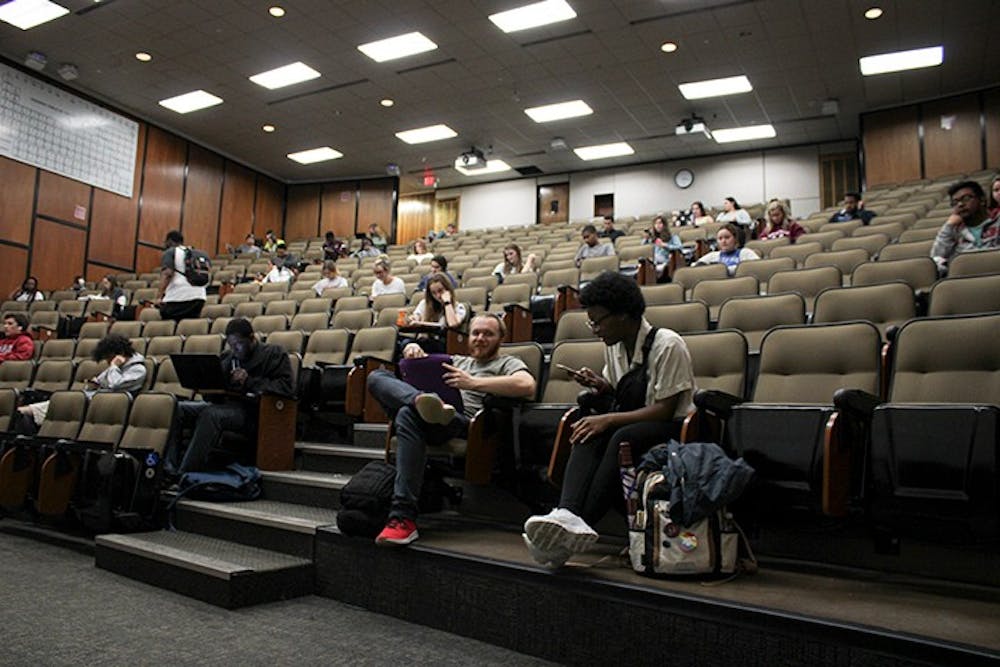Students are beginning to see changes in the modes of instruction for their class schedule on Self-Service Carolina for the fall semester. There are three possibilities: face-to-face, online and a hybrid of face-to-face and online instruction.
Final changes to class schedules are expected to be done by July, but there may be minor changes up until August.
“We always have changes even up to August even in a regular semester,” Sandra Kelly, vice provost said. “But we will try to keep those to a minimum.”
Kelly also leads the academics and research committee for the Future Planning Group.
The decisions about classes and instructional mode are being handled at the academic unit level.
Kelly said the university is following a two-part process before making final decisions on class schedules, first considering the faculty’s preferred mode of instruction and then classroom capacity.
“We can’t make classroom assignments without knowing what’s going online,” Kelly said. “It’s a chicken and the egg kind of problem.”
Faculty were asked to make decisions regarding their preferred mode of instruction by the beginning of June, almost three months before classes begin in August.
Depending on the circumstances, faculty may request to change the mode of instruction after the final changes to class schedules have been made in July, but it is harder to transition from online to face-to-face once classrooms have been assigned.
“If you choose to go online, it can be really hard to go back to face-to-face because we're going to take that space with other people,” Kelly said. “So I can't guarantee you a good classroom space.“
For the fall semester, not every course will be offered face-to-face and online. Bottleneck courses, or courses that do not have a substitute, will have an online option.
“We really want to make sure that everybody, all the students, can make progress towards degrees,” Kelly said. “They might not get their first choice in class, but they'll be able to progress towards degrees.”
If there is a scenario where the university moves to online instruction in the middle of the semester, Kelly said faculty should have a “plan B in their pocket.”
Students will also have the option to be on campus and take classes completely online if they choose.
Deans and academic staff are also evaluating the option of hiring additional faculty members to increase the number of courses offered face-to-face.
Interim provost Tayloe Harding said there are salaried faculty who express an interest in taking on more courses “all the time” to the deans.
There are also graduate assistants, adjunct faculty and non-contract faculty who have established teaching loads that teach whatever is requested of them, Harding said.
Academic units also are charged with making the decision regarding the technology needed in classrooms to accommodate students who choose to take classes online.
There is $2 million set aside for the university to spend if needed to “get all of the instruction that we need to get,” Harding said.
This funding comes from the On Your Time Initiative, which was started by President Emeritus Harris Pastides to help students who want to expedite their coursework by offering three-year study plans and supplemental instruction.
The program is suspended to pay for the costs of making accommodations due to COVID-19.
The conversation surrounding improving the quality of online education has been at the department level.
Harding said the feedback from the student evaluation forms that are sent out at the end of each semester are also being considered in the planning for online classes for the fall.
Augie Grant, the director of the Center for Teaching Excellence (CTE) said faculty are working hard to adapt since class transitioned online in the spring due to the coronavirus.
Between March 16 and May 22, 565 unique individual instructors of record participated in 996 training opportunities. Individual instructors of record include full-time faculty, clinical faculty, teaching assistants and adjuncts.
“We actually had less demand the last two weeks of March than I expected, and the first week of April, and demand started to build as we got through April,” Grant said.
The training opportunities instructors of record could attend included the following: CTE workshops, individualized instructional design consultation, drop-in sessions, email inquiries, webinars and written materials that can be shared on social media.
President Bob Caslen announced May 27 that face coverings will be required in classrooms. Buildings like the Thomas Cooper Library, Russell House and the Student Health Center will have door checks before entering the building. If a student does not have a face covering, they will not be allowed to enter.
In the classrooms, faculty will be offering paper face coverings for students who do not have one. Faculty will also be expected to enforce wearing face coverings in the classroom in addition to students holding each other accountable, Kelly said.
“We're hoping that students will help from just a social pressure point of view because anybody without a safe covering will be endangering all of their classmates,” Kelly said.
There has not been a decision regarding classes for the spring semester.

